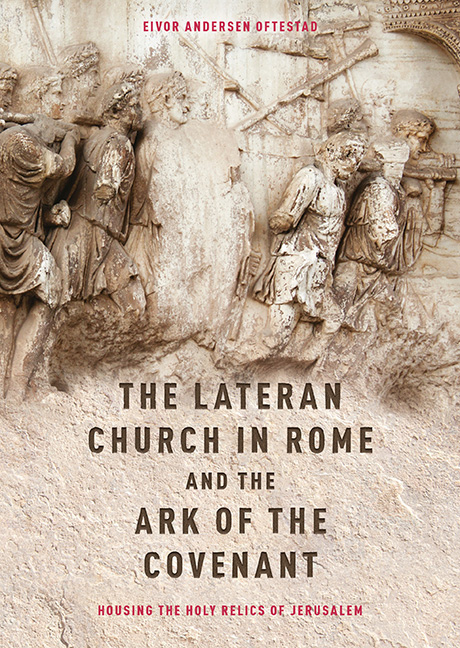 The Lateran Church in Rome and the Ark of the Covenant: Housing the Holy Relics of Jerusalem
The Lateran Church in Rome and the Ark of the Covenant: Housing the Holy Relics of Jerusalem Book contents
- Frontmatter
- Dedication
- Contents
- List of Tables
- Acknowledgements
- List of Abbreviations
- Author's Note
- Prologue
- 1 Introduction
- 2 The Description of the Lateran Church
- 3 In the Roman Context
- 4 In the Northern French Context
- 5 In the Jerusalem Context
- 6 The Temple of the New Covenant
- 7 Nikolaus Maniacutius and John the Deacon
- Epilogue
- Appendix 1 Manuscripts Transmitting the Descriptio Lateranensis Ecclesiae
- Appendix 2 Different Versions of the Descriptio Lateranensis Ecclesiae
- Appendix 3 Edition and Translation of the Descriptio Lateranensis Ecclesiae (Reg. lat. 712)
- Bibliography
- Index
- Other volumes in Studies in the History of Medieval Religion
1 - Introduction
Published online by Cambridge University Press: 31 August 2019
- Frontmatter
- Dedication
- Contents
- List of Tables
- Acknowledgements
- List of Abbreviations
- Author's Note
- Prologue
- 1 Introduction
- 2 The Description of the Lateran Church
- 3 In the Roman Context
- 4 In the Northern French Context
- 5 In the Jerusalem Context
- 6 The Temple of the New Covenant
- 7 Nikolaus Maniacutius and John the Deacon
- Epilogue
- Appendix 1 Manuscripts Transmitting the Descriptio Lateranensis Ecclesiae
- Appendix 2 Different Versions of the Descriptio Lateranensis Ecclesiae
- Appendix 3 Edition and Translation of the Descriptio Lateranensis Ecclesiae (Reg. lat. 712)
- Bibliography
- Index
- Other volumes in Studies in the History of Medieval Religion
Summary
The right education of that part of the human race which consists of the people of God has, like that of a single man, advanced through certain epochs or, as it were, ages, so that it might rise upwards from temporal to eternal things, and from the visible to the invisible.
From the beginning of the twelfth century and for more than six hundred years, the canons of San Giovanni in Laterano in Rome claimed that the actual Ark of the Covenant, together with other paraphernalia from the temple of Jerusalem, was part of their treasures. The aim of this book is to analyse liturgical and historical sources from the twelfth century in order to understand the context and purpose of this claim. The most important source in this study is the tract later known as Descriptio Lateranensis Ecclesiae (the Descriptio), probably composed around 1100. The Ark of the Covenant is a central object in the Descriptio, and the claim of this study is that the Ark was presented as a proof that San Giovanni was ‘the temple of the New Covenant’ and the successor to the temple of Jerusalem.
The basilica of San Giovanni in Laterano is unique in western Christian history as it was the first church built by the emperor Constantine, who had converted to Christianity in the early fourth century. According to the legends, the basilica was dedicated to the Saviour himself and, after 600, the name Basilica Salvatoris (Basilica of the Saviour) was in use. In the period studied in this book, the sources also use the title Basilica Salvatoris et Johannis Baptistae et Evangelistae (Basilica of the Saviour, John the Baptist and John the Evangelist). Unlike other major extramural basilicas of Rome, the church was not founded on any earthly remains of saints. Its supreme position therefore had to be legitimized in other ways. The claim of the Ark and the other objects from the Old Covenant represents one possible strategy of legitimization from the twelfth century. According to the prologue of the Descriptio the purpose was to reveal the treasures, the relics and the traditions, thereby making manifest the dignity of the basilica. Since the Lateran held dominion and primacy over all other churches of the world, its dignity was claimed as the supreme sanctuary, not only of Rome, but of all Christendom.
- Type
- Chapter
- Information
- The Lateran Church in Rome and the Ark of the Covenant: Housing the Holy Relics of JerusalemWith an Edition and Translation of the Descriptio Lateranensis Ecclesiae (Bav Reg. Lat. 712), pp. 1 - 20Publisher: Boydell & BrewerPrint publication year: 2019


